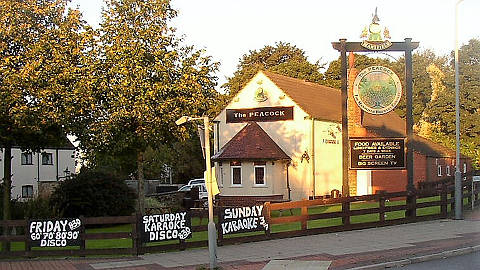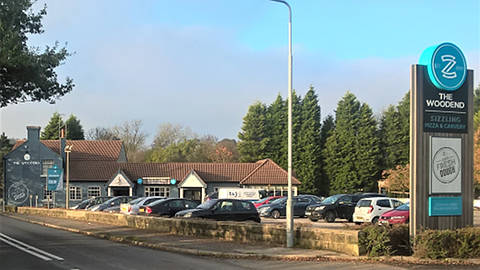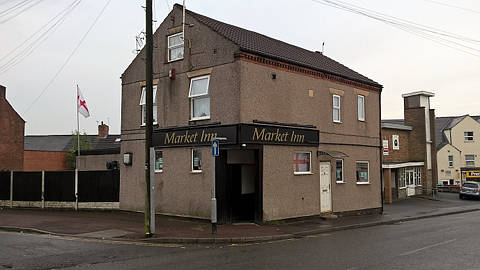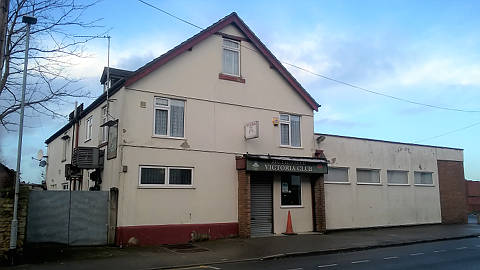A Hucknall History
Pubs & Licensed Clubs
Beer House Inns & Hotels
Pubs are generally classified for covering all licensed Public Houses from early beer houses, inns, hotels and entertainment clubs. There's good chance of still hearing a few regulars brewing up entertainingly imaginative tales, but uncovering and presenting a previously vague history can only be soberly based on recorded evidence, up until potentially adding some reliable memories.
A brief background behind traditional British pubs might well begin from Roman occupancy. Importing their love of wine and armed mobility laying long straight roads afforded resting tabernae, or taverns signed by roadside vines. Ale brewing can however, date far back into the bronze age. It regained favour through later invading settlers similarly adopting roadside Inns. They displayed an easier found staked green bush to signal availability of their brews. Ale would long be considered a far safer family drink rather than risking communal waters. Bread and weak beers commonly formed the staple diet cheaply feeding massed majority of an English population. Pilgrims venturing through the Middle Ages found such hostelry among brewing monasteries. As travelling traders braved busier town routes, more localised stabling became offered when a farm house also typically presented biggest communal building to accommodate public gatherings. Serving home made brews while offering food and lodgings invited all weary travellers.
Socially centring smaller communities around at least one public house founded a recognised English tradition. Distinguishable by a customary hung sign portraying many old familiar pub names dates from 1393 decree by Richard II. He demanded all taverns be clearly signed for visits by appointed ale tasters. Their enviable job carried royal powers to close any non compliant establishment. Intent was to discourage rouge practices in competitive busier towns, later needing stricter control with national effect. That decree could be considered the first licensing law, leaving no doubt why so many older pub names displayed allegiance to the crown.
Considering few could actually read or write, a simple pictorial painting thus became easily identifiable. Widely popular choice of a White Hart had actually represented King Richards own heraldic symbol. The first recognised licensing Act came in 1551, officially setting out to control the abuses and disorders as are had and used in common alehouses.
Hop enriched beers would broaden tastes while passengers sought speedy journeys between larger stage coach hotels. Competition between far cheaper Gin Houses caused notorious harm, even threatening national economy. Further 18th century legislation led to stricter Acts including gaming.
Trade directories basically expose growth from a rural Hucknall Huthwaite beyond 1830. They first assert there were already three well established inn signs. Press articles can predate usage to suggest far earlier establishment, although a relatively tranquil past didn't really merit much earlier coverage. Understandings therefore commonly start from 19th century gazetteers introducing titled occupation of beer house keeper
. They recognise how wealthier farm holders gained a supplementary income quenching thirsts.
Indexing fully identifies the number of recognised Huthwaite licensed premises in order of asserted appearance. Including lesser recognised short term beer houses, plus later clubs and restaurants serving another primary purpose, still leaves a significant number of established pubs. Visiting those on a 1950's pub crawl would have counted a dozen within these village extremities.
Witnessing recent dramatic loss of almost all these established Huthwaite licensed premises resulted from a widespread demise of the British pub industry. Regional closures started becoming more frequently evident beyond 1980, but the following decades hit trade even harder across this entire district. Desperate struggles to keep pubs open commonly claimed frequent closures. The 21st century only seemed more determined to wipe out use of traditional English pubs. Turning those that may remain into an historical rarity therefore presents another long list covering dated closures, before finally asserting answer behind which served longest.
Unprecedented mass closure of all UK hospitality businesses due the 2020 Covid-19 pandemic effected these last four established Huthwaite pubs. More social changes seem inevitable after reopening doors from that dramatic setback. Two much more recent clubs now share uncertain futures, whereas The Woodend keeps its modern popularity serving restaurant food. The Peacock may be considered the last surviving typical village pub, and 2022 marked 190 years upon which to extend longest known service.
01 Apr 02 by Gary Elliott Updated 30 Jun 22




